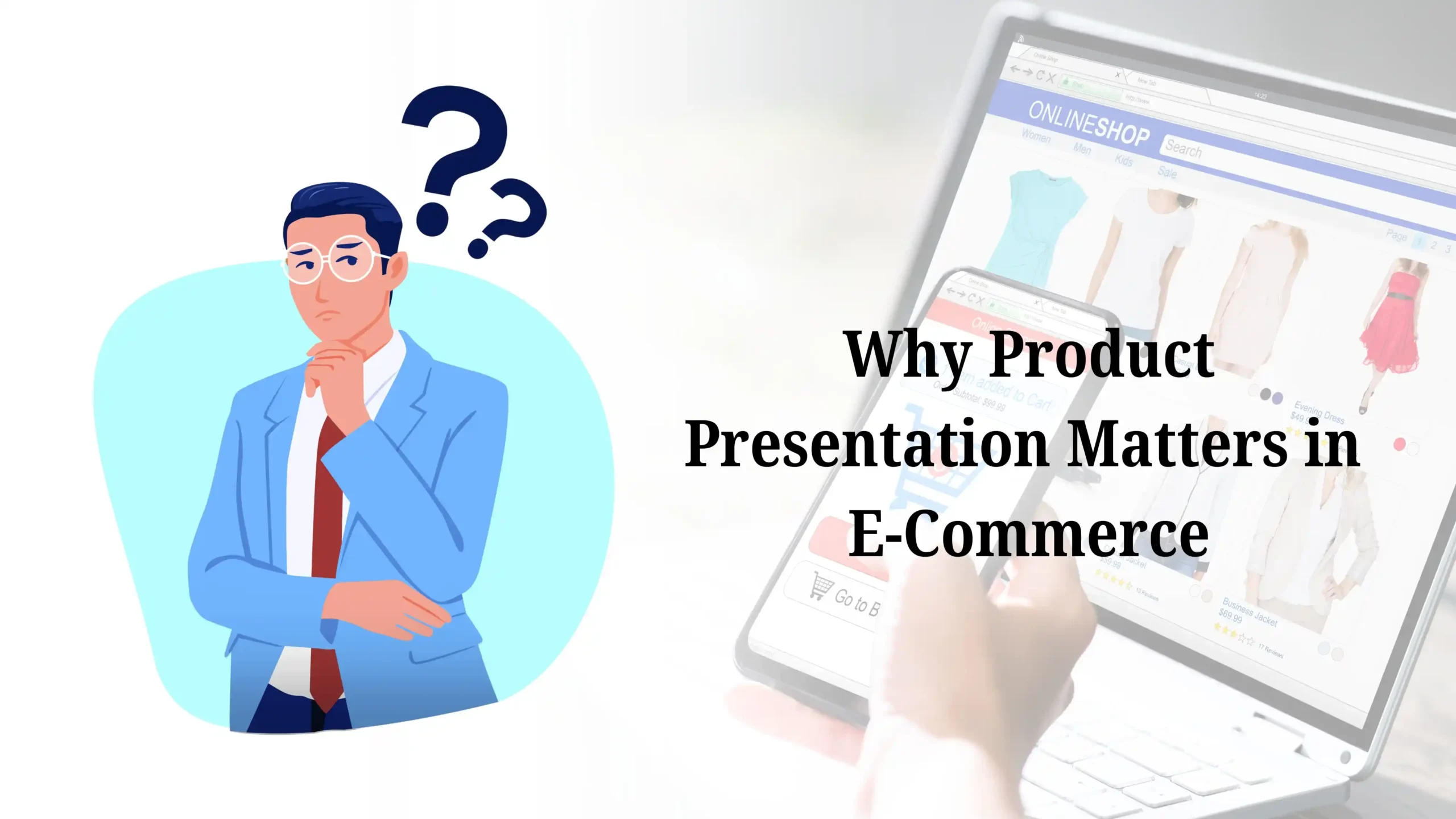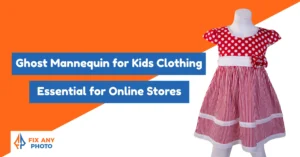I believe that a well-presented product has the power to completely transform how customers perceive a brand. In the fast-paced world of fashion and e-commerce, visuals are no longer just about looking good; they help build trust and drive sales.
In recent years, Ghost Mannequin vs 3D Modeling has become one of the most discussed comparisons in the fashion industry. Both techniques have redefined how apparel is displayed online, helping customers visualize products as if they were wearing them.
Before diving deeper into their differences, it’s essential to understand why product presentation matters so much in e-commerce, because great visuals aren’t just decoration; they are a core part of every brand’s success strategy.
Why Product Presentation Matters in E-Commerce
 In the world of online sales, the first impression strongly influences a customer’s buying decision. Studies show that nearly 90% of shoppers make their purchase decisions based solely on product visuals. A clear, realistic, and appealing product image not only looks attractive but also builds trust in the brand and directly impacts sales growth.
In the world of online sales, the first impression strongly influences a customer’s buying decision. Studies show that nearly 90% of shoppers make their purchase decisions based solely on product visuals. A clear, realistic, and appealing product image not only looks attractive but also builds trust in the brand and directly impacts sales growth.
High-quality images increase a brand’s credibility and help communicate the true value of a product. With proper editing, the color, texture, and fit of clothing can be presented accurately, reducing confusion and significantly lowering return rates.
Ultimately, consistent and well-edited visuals are the most effective way to stand out from competitors.
Now, let’s take a look at how Ghost Mannequin vs 3D Modeling compare and find out which option is best for your brand.
Ghost Mannequin vs 3D Modeling: Key Differences
In modern fashion image editing, both techniques serve the same purpose: creating appealing and realistic visuals for apparel. The first method involves editing real product photos to achieve a clean, natural hollow effect, while the second focuses on digitally designing garments to control lighting, texture, and angles with greater flexibility.
Aspect | Ghost Mannequin Editing | 3D Modeling Editing |
Visual Output | Since it’s created from real photos, the images retain natural textures, shadows, and depth — making the visuals more believable to customers. | Being completely digitally rendered, the images often lack the authentic feel of real fabric. |
Quality & Realism | Delivers a high level of realism because it’s based on actual garment photography. | Maintains consistent quality, but the visuals may appear less natural. |
Flexibility & Control | Allows precise editing for each garment without compromising realism. | Offers flexibility, but as everything is digitally created, the visuals can sometimes appear artificial. |
Technical Requirements | Requires a photography setup and skilled retouchers for the best results; the software itself is simple and efficient. | Demands advanced software and professional 3D designers, which makes it more time-consuming and expensive. |
Time & Cost | Faster turnaround and more cost-effective for small to mid-sized fashion brands. | Generally takes longer and costs more to produce. |
As a result, the first method stands out as the more realistic, efficient, and cost-effective approach. For most fashion brands that prefer authentic, photo-based visuals, it remains the most reliable and effective solution.
Meanwhile, the second method introduces new opportunities for modern digital brands and creative experimentation. However, for those who value natural appearance, texture accuracy, and faster production, the first method continues to be the better choice.
Pros and Cons of Ghost Mannequin Editing
 This technique is a popular method for showcasing clothing in a clean, realistic way, but like any method, it comes with its strengths and limitations. Let’s explore the key advantages and challenges of this technique:
This technique is a popular method for showcasing clothing in a clean, realistic way, but like any method, it comes with its strengths and limitations. Let’s explore the key advantages and challenges of this technique:
Pros:
- Realistic garment representation with the dummy effect.
- Affordable for smaller brands and quick turnaround time.
- Clean, professional look for product displays.
- Consistent results across multiple product angles.
- Easy to highlight shape, texture, and fabric quality.
- Reduces distraction from background or human models.
- Enhances brand presentation with a uniform catalog style.
- Works well for both online stores and print catalogs.
Cons:
- Requires skilled editors to achieve perfect results.
- Maintaining natural depth in complex fabric patterns can be challenging.
- Any imbalance in lighting may reduce the realistic appearance.
- Incorrect cutouts or masking can distort the garment’s shape.
- Lack of proper volume and shadows can make the image look flat.
- Maintaining consistent quality across large batches can be difficult.
- Relies heavily on specific editing software or tools.
- Minor color or texture mismatches can make the image differ from the actual product.
Pros and Cons of 3D Visualization for Clothing Displays
 3D rendering for clothing displays offers advanced features that bring interactive and high-quality visuals to your online store, but it also presents some challenges. Let’s dive into the key pros and cons of using this technique:
3D rendering for clothing displays offers advanced features that bring interactive and high-quality visuals to your online store, but it also presents some challenges. Let’s dive into the key pros and cons of using this technique:
Pros:
- Provides high-quality visuals and a polished finish.
- Increases user engagement with interactive features.
- Perfect for virtual fitting rooms and online shopping experiences.
- Allows complete control over lighting, fabric texture, and angles.
- Reduces the need for physical samples and photoshoots.
- Enables easy modifications and updates without re-editing photos.
- Offers realistic product previews before production.
- Helps brands visualize custom designs faster and more efficiently.
- Ideal for showcasing collections in 3D catalogs or digital showrooms.
- Supports AR and VR integration for an immersive shopping experience.
Cons:
- Time-consuming and expensive to create detailed 3D models.
- Requires skilled designers and advanced software.
- Can look artificial if textures or lighting are not properly rendered.
- High-quality rendering demands powerful hardware.
- Not suitable for brands with limited budgets or tight deadlines.
- May require frequent updates with changing fashion trends.
- Complex garments or layered fabrics can be difficult to simulate accurately.
- Takes longer to achieve realistic motion or draping effects.
- May reduce the “real feel” customers get from photos of actual products.
Which Option is Right for Your Brand?
 When choosing between the two editing methods, the right choice depends on your brand’s goals, product style, and creative direction. One offers realistic visuals and efficiency, while the other focuses on digital flexibility and innovation. For most fashion-focused brands, the first method provides a more practical and authentic outcome, whereas the second fits better for advanced, tech-driven projects.
When choosing between the two editing methods, the right choice depends on your brand’s goals, product style, and creative direction. One offers realistic visuals and efficiency, while the other focuses on digital flexibility and innovation. For most fashion-focused brands, the first method provides a more practical and authentic outcome, whereas the second fits better for advanced, tech-driven projects.
Let’s take a closer look at the comparison table below to see which option fits your brand best.
Evaluation Category | Ghost Mannequin Editing | 3D Visualization |
Assessing Your Needs | Best for brands looking for efficiency, realism, and cost-effective image production. | Ideal for brands focusing on futuristic experiences and immersive visuals. |
Fashion & Apparel Type | Works perfectly for most clothing — from t-shirts to formalwear — ensuring a natural and wearable look. | Better for luxury, custom, or experimental designs where 3D control is crucial. |
E-Commerce Use | Perfect for clear, realistic product images that build trust with online shoppers. | Great for interactive or 360° product experiences in digital platforms. |
If you want to showcase your clothing in a realistic, clean, and professional way, Ghost Mannequin Editing is the most effective option for you. It’s fast, cost-efficient, and delivers authentic results that instantly build customer trust.
On the other hand, if you aim to create a more interactive and modern digital experience, such as virtual showrooms, 3D presentations, or custom design displays, then 3D Visualization will be the best solution for your brand.
Final Thoughts: The Art of Product Visualization
In today’s digital fashion world, visuals do more than just show a product; they tell your brand’s story. Both techniques discussed above can elevate how your brand connects with customers. Thoughtful image editing brings realism and trust, while modern visualization adds innovation and interactivity. When creativity and precision come together, even a simple outfit can turn into something memorable — helping your brand stand out, inspire confidence, and build stronger engagement.
At Fix any photo, we specialize in all kinds of professional photo editing services to help your visuals look polished, consistent, and truly brand-defining.
FAQ: Choosing the Best Clothing Display Method
How can clothing product photos be presented more realistically and attractively?
Through professional photo editing and proper lighting, product images appear more premium and appealing
What is the most effective visual technique for displaying apparel in online stores?
The one that clearly highlights the product’s shape, texture, and fit is the most effective.
What’s the best way to maintain a “natural look” in clothing product photos?
By keeping perfect angles, balanced colors, and subtle shadows during photo editing.
Why do fashion brands prefer photo-based visuals over fully digital ones?
Because real photographs build trust with customers and directly influence purchase decisions.
Which visual method is more time-saving and cost-effective for small and medium fashion brands?
Ghost Mannequin editing is the fastest and most budget-friendly solution, allowing clothing to be displayed flawlessly without a separate photoshoot.





